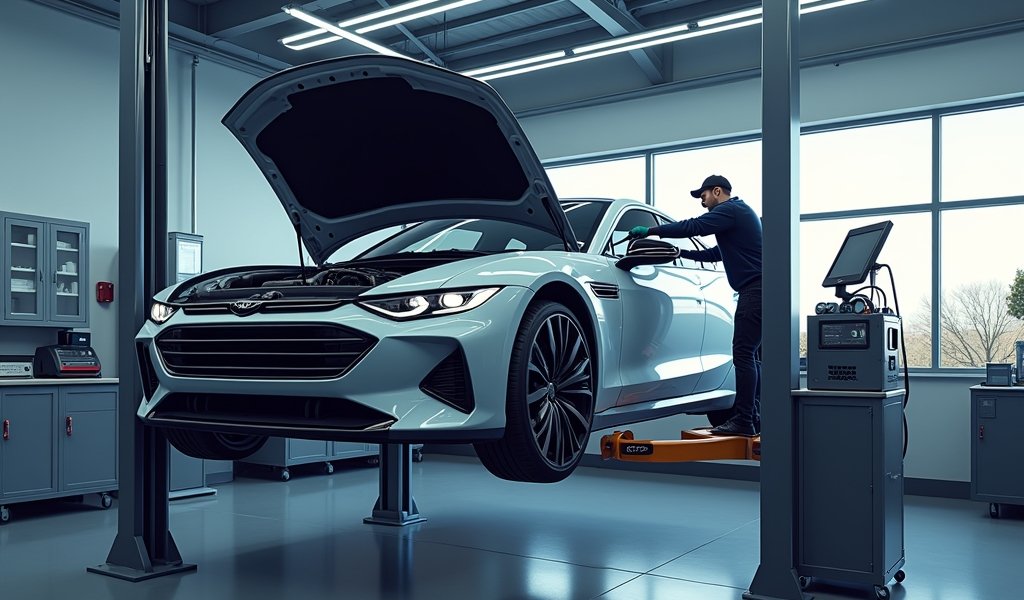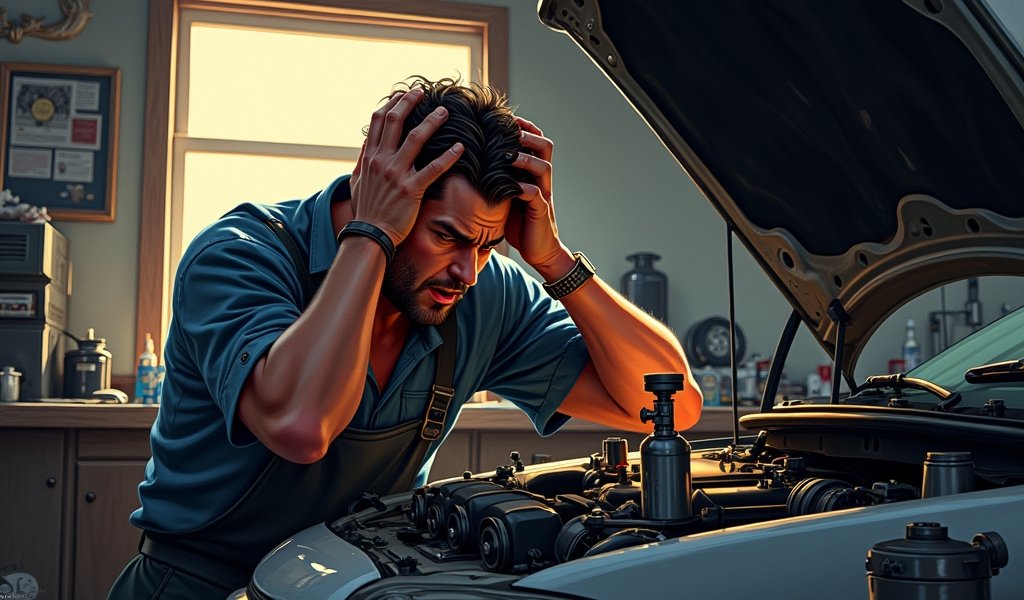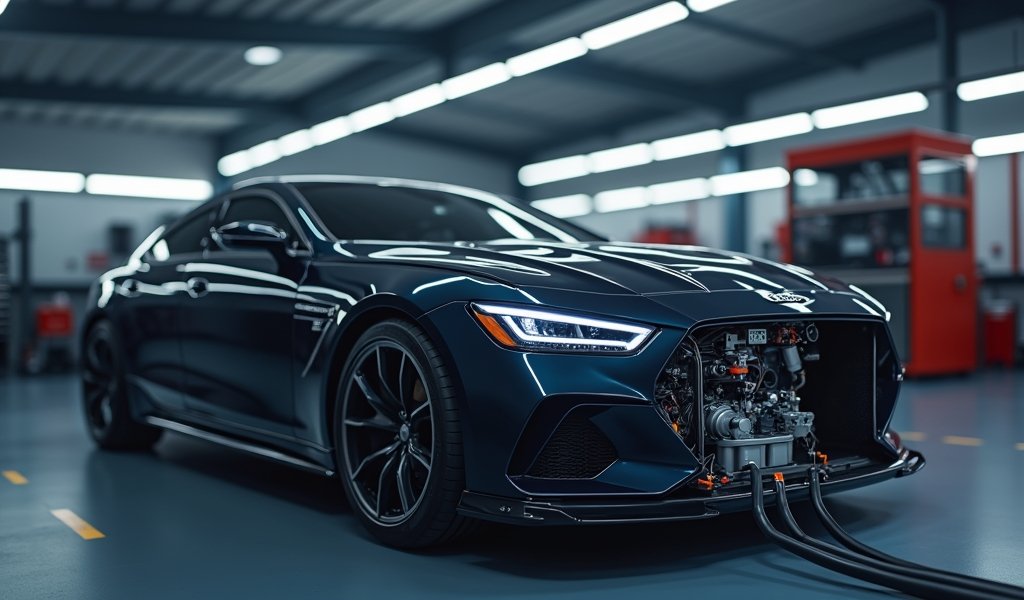Overview
This article provides a detailed guide to DIY high pressure fuel pump calibration, explaining how proper calibration improves vehicle performance, fuel economy, and component longevity while saving $200-500 compared to dealer service costs. It covers everything from understanding fuel pump function and recognizing calibration issues to step-by-step calibration procedures, safety precautions, necessary tools, troubleshooting tips, and maintenance recommendations for optimal engine performance.
Table of Contents
- Understanding the High Pressure Fuel Pump: Your Engine’s Heartbeat
- Why Calibration Matters: Performance, Economy, and Longevity
- Signs Your High Pressure Fuel Pump Needs Calibration
- Safety First: Critical Precautions Before You Start
- Tools and Materials: Gearing Up for Success
- Step-by-Step Guide to DIY Fuel Pump Calibration
- Troubleshooting Common Calibration Challenges
- Post-Calibration Testing and Maintenance
- Conclusion: Balancing DIY Savings with Professional Help
- Frequently Asked Questions
Understanding the High Pressure Fuel Pump: Your Engine’s Heartbeat
Think of your vehicle’s high pressure fuel pump as the heart of your fuel delivery system. Just like your own heart pumps blood precisely where it needs to go, this crucial component pressurizes and delivers fuel with exact timing to your engine’s combustion chambers. When it’s working correctly, everything hums along beautifully. When it’s not properly calibrated, your entire driving experience suffers.
Modern engines, especially those with direct injection systems, rely on incredibly precise fuel delivery. These systems operate under extreme pressures—sometimes exceeding 2,000 PSI—making proper calibration not just beneficial but essential for optimal performance. I’ve been calibrating these systems for over 15 years, and I can tell you firsthand that a well-tuned fuel pump transforms how a vehicle drives.
The high pressure fuel pump operates like a precision instrument in an orchestra. It takes its cues from your engine control unit (ECU), adjusting fuel delivery based on countless variables including engine load, temperature, and your right foot’s requests through the accelerator pedal. This dance of mechanical and electronic components requires perfect synchronization—something that quality ECU management software helps maintain.
Why Calibration Matters: Performance, Economy, and Longevity
You wouldn’t try playing a piano that’s out of tune, would you? The same principle applies to your fuel system. Proper calibration ensures your engine receives exactly the right amount of fuel at precisely the right pressure, creating the perfect air-fuel mixture for combustion.
When your high pressure fuel pump is properly calibrated, you’ll experience:
- Crisp, immediate throttle response
- Optimal fuel economy (I’ve seen improvements of 2-3 MPG)
- Smoother idle and acceleration
- Reduced emissions
- Extended component life throughout the fuel system
Incorrect calibration, on the other hand, is like trying to water your garden with a fire hose—either too much pressure damages components, or too little leaves your engine gasping for fuel during peak demand. This mismatch costs you at the pump and potentially leads to expensive repairs down the road.
According to research from the Society of Automotive Engineers, proper fuel delivery calibration can improve combustion efficiency by up to 8% in direct injection systems. That’s meaningful savings over the life of your vehicle.

Signs Your High Pressure Fuel Pump Needs Calibration
Your vehicle has a way of speaking to you when something’s off. When it comes to fuel pump calibration issues, the language is pretty clear if you know what to listen for. In my garage, I see these telltale symptoms almost weekly:
- Your car hesitates or stumbles when accelerating—like a runner who forgot to tie their shoelaces
- Fuel economy has mysteriously declined despite no changes in driving habits
- The engine idles roughly, sometimes feeling like it might stall
- You notice a frustrating lack of power, especially at higher RPMs
- The check engine light illuminates, often accompanied by fuel trim codes
- The engine is harder to start, particularly in cold weather
I had a customer bring in a 2018 Audi last month exhibiting classic symptoms—hesitation during acceleration and poor fuel economy. Her dealer quoted $750 for the calibration service. We performed the same calibration for less than half that amount, and she immediately noticed her vehicle felt “like new again.”
Pay particular attention to how your vehicle performs during rapid acceleration. A properly calibrated fuel system delivers a smooth, consistent power curve. If you feel “flat spots” or momentary losses of power during acceleration, your high pressure fuel pump might be struggling to meet demand due to calibration issues.
Safety First: Critical Precautions Before You Start
I can’t stress this enough: fuel system work demands serious respect for safety. I’ve seen the aftermath of shortcuts, and it’s not pretty. Gasoline is highly flammable, and these systems operate under extreme pressure. Before you begin any calibration work, follow these non-negotiable safety measures:
- Work in a well-ventilated area—preferably outdoors or in a garage with doors wide open
- Disconnect the vehicle’s battery negative terminal to prevent electrical sparks
- Have a functional ABC-rated fire extinguisher within arm’s reach
- Wear safety glasses and fuel-resistant nitrile gloves
- Properly relieve fuel system pressure before disconnecting any components
- Allow the engine to cool completely if you’ve recently been driving
- Keep a catch pan and absorbent materials ready for fuel spillage
- Remove all ignition sources from your work area (including phones, which can spark)
To properly relieve fuel pressure, locate and remove the fuel pump fuse (check your owner’s manual for location), then start the engine and let it run until it stalls. This process drains pressure from the system, making it safer to work on.
Remember that even after relieving pressure, residual fuel will be present. Treat every component as if it contains pressurized fuel. According to the National Fire Protection Association, fuel system fires account for nearly 30% of vehicle service-related incidents—most of which were preventable with proper precautions.
Tools and Materials: Gearing Up for Success
Having the right tools before you start will save you hours of frustration. I’ve put together this list based on what I use daily in my own shop:
- OBD-II diagnostic scanner with fuel system calibration capabilities (not all scanners offer this—check yours before proceeding)
- Basic mechanic’s tool set (sockets, ratchets, extensions, screwdrivers)
- Fuel pressure gauge compatible with your vehicle’s fuel system
- Clean shop rags and approved containers for catching spilled fuel
- Fresh fuel filter (recommended replacement during this service)
- Anti-static wrist strap to prevent static discharge
- Factory service manual specific to your vehicle (critical for specifications)
- Notebook or smartphone for recording pressure readings
- Flashlight or work light
- Jack and jack stands if undercar access is needed
The diagnostic scanner is your most crucial tool for this job. Generic code readers won’t cut it—you need a scanner with bidirectional controls that can command changes to the fuel system and record the results. Professional-grade scanners like the Autel MaxiSys or Launch X431 offer these features, but there are also more affordable options like the BlueDriver Pro that work for many vehicles.
Before investing in a scanner, check if it supports fuel system calibration for your specific vehicle make and model. Some manufacturers (looking at you, BMW and Mercedes) require proprietary equipment for complete calibration access. In these cases, throttle position sensor calibration tools can sometimes provide a workaround for achieving similar results.

Step-by-Step Guide to DIY Fuel Pump Calibration
With safety measures in place and tools at the ready, let’s walk through the calibration process step by step. I’ll break this down the same way I do for apprentices in my shop—methodically and thoroughly.
1. Accessing Your Fuel Pump
Most high pressure fuel pumps are located in one of two places: either mounted directly on the engine (common in direct injection systems) or inside the fuel tank (typical for the low-pressure pump that feeds the high-pressure pump). Consult your service manual for exact location.
For engine-mounted pumps, you’ll typically need to remove an engine cover and possibly some accessory components to gain clear access. For in-tank pumps, many vehicles have access panels under the rear seat or in the trunk/cargo area.
2. Initial Diagnostics
Before making any adjustments, you need to establish a baseline:
- Connect your OBD-II scanner to the diagnostic port (usually under the dashboard)
- Access the fuel system control module within your scanner’s menu
- Record all current pressure readings and settings
- Note any stored fault codes related to the fuel system
Most modern scanners will display several critical values including low-pressure pump readings, high-pressure pump readings, commanded vs. actual pressure, and fuel trim percentages. Think of these numbers as your “before” picture—you’ll compare them to your “after” results once calibration is complete.
3. Performing the Calibration
Follow these steps carefully:
- Enter the calibration mode on your scanner (often found under “Special Functions” or “Adaptations”)
- Select “Fuel Pump Calibration” or similar option
- The scanner will guide you through a series of tests at various engine speeds
- At each test point, the system will measure actual pressure against expected pressure
- Make adjustments according to the scanner’s prompts, typically by entering correction values
- After each adjustment, verify the new pressure readings match manufacturer specifications
During this process, you may need to start and stop the engine several times, run it at specific RPMs, or perform specific driving conditions if your scanner supports live calibration. Follow the prompts exactly—skipping steps or rushing through them will result in poor calibration.
4. Programming the New Values
Once you’ve completed all calibration steps:
- Save the new calibration values to the vehicle’s ECU
- Clear any diagnostic trouble codes
- Perform an idle relearn procedure if prompted by your scanner
- Shut down and restart the engine to verify the new settings are stored
This programming step essentially teaches your vehicle’s computer the new “normal” for fuel pressure delivery. Modern engines constantly adapt to conditions, so this calibration becomes the new baseline from which minor adjustments are made during operation.
5. Verification Testing
The final step is crucial—test your work thoroughly:
- Start the engine and let it reach operating temperature
- Check idle quality—it should be smooth and consistent
- Rev the engine to 2,000 RPM and hold—look for steady pressure readings
- Test acceleration from a stop—there should be no hesitation or stumbling
- If possible, take a brief test drive, monitoring fuel pressure at various speeds
- Verify no warning lights have appeared on the dashboard
Use your scanner to monitor real-time fuel pressure during these tests. What you’re looking for is consistency—pressure should increase smoothly with engine demand and remain stable at steady states. Erratic readings suggest more work is needed.
Troubleshooting Common Calibration Challenges
Even with careful preparation, you might encounter some roadblocks. Here are solutions to common issues I’ve faced over years of calibration work:
Scanner Communication Issues
If your scanner won’t communicate properly with the vehicle:
- Verify your scanner supports your specific vehicle model
- Check for loose connections at the OBD-II port
- Ensure the battery is fully charged (low voltage can cause communication errors)
- Try cycling the ignition key several times before reconnecting
Calibration Values Won’t Save
If the new calibration values won’t save to the ECU:
- Check if your vehicle requires a security bypass (some manufacturers restrict access)
- Verify you’re following the exact procedure for your specific model
- Try disconnecting the battery for 15 minutes to reset the ECU, then reattempt
Pressure Remains Inconsistent After Calibration
When pressure readings remain erratic despite calibration:
- Inspect the fuel pump for physical damage or excessive wear
- Check for restrictions in the fuel line or clogged filters
- Test the fuel pressure regulator functionality
- Look for vacuum leaks that might affect pressure readings
- Check for sensor issues using manifold absolute pressure readings
Sometimes what appears to be a calibration issue is actually a mechanical problem with the pump itself or related components. In these cases, parts replacement may be necessary before successful calibration can occur.
Remember that not all vehicles respond the same way to calibration procedures. European vehicles, in particular, often have manufacturer-specific quirks that require special handling. When in doubt, consult model-specific forums where other DIYers share their experiences with the same vehicle.
Post-Calibration Testing and Maintenance
After successful calibration, your vehicle needs a proper break-in period. During the first 50-100 miles, your ECU will fine-tune its fuel trim values based on the newly calibrated baseline. This is completely normal and helps optimize the system for your specific driving patterns.
Here’s what to expect after calibration:
- Immediate improvements in throttle response and engine smoothness
- Gradual improvements in fuel economy (give it a tank or two)
- Elimination of hesitation during acceleration
- More consistent idle quality
- Better cold-start behavior
To maintain your newly calibrated fuel system, follow these practices:
- Use high-quality fuel from reputable stations
- Replace fuel filters according to manufacturer schedules
- Keep your fuel tank above one-quarter full (the pump uses fuel for cooling)
- Consider using a quality fuel system cleaner every 5,000-10,000 miles
- Address check engine lights promptly
- Perform calibration checks after any major engine work
I recommend checking calibration values every 30,000 miles as preventative maintenance. This interval has proven effective for catching drift before it causes noticeable performance issues. For vehicles used in severe conditions (extreme temperatures, frequent short trips, or towing), consider more frequent checks.
Conclusion: Balancing DIY Savings with Professional Help
Like a maestro conducts an orchestra, your high pressure fuel pump orchestrates the precise delivery of fuel throughout your engine. When properly calibrated, this system creates a symphony of efficient combustion, responsive performance, and optimal fuel economy.
DIY calibration can save you between $200-500 compared to dealer service costs—a substantial saving for a job that typically takes 1-3 hours once you’re familiar with the process. However, the real value comes in understanding your vehicle better and addressing small issues before they become expensive problems.
That said, recognize when a job exceeds your capabilities. Some vehicles have exceptionally complex fuel systems or security measures that make DIY calibration challenging. If you encounter persistent difficulties or don’t have access to proper equipment, professional help might ultimately save you time, frustration, and potentially costly mistakes.
The best DIY mechanics know when to tackle a job themselves and when to seek expert assistance. Whichever path you choose, proper fuel pump calibration pays dividends in performance, economy, and longevity—making it one of the most valuable services you can provide for your vehicle.
Frequently Asked Questions
How often should high pressure fuel pump calibration be performed?
Manufacturers typically recommend calibration checks every 60,000 miles or when symptoms appear. More frequent checks are beneficial for high-performance or heavily modified vehicles.
Can I damage my engine by attempting DIY calibration?
Improper calibration can potentially cause running issues but rarely causes permanent damage. The ECU has failsafes to prevent dangerous fuel mixtures from being delivered.
Will calibration fix a mechanically failing fuel pump?
No, calibration optimizes a functioning pump but cannot fix mechanical failures. If your pump is physically damaged or worn out, replacement is necessary before calibration.
How much fuel economy improvement can I expect after calibration?
Most properly calibrated systems see 1-3 MPG improvements. The exact gain depends on how far off the calibration was previously and your driving habits.
Do I need a dealer-level scanner for calibration?
Many mid-range scanners now offer calibration functions for common vehicles. Luxury or European brands often require more specialized equipment for full functionality.

